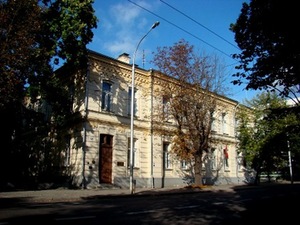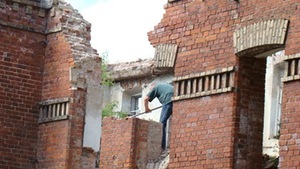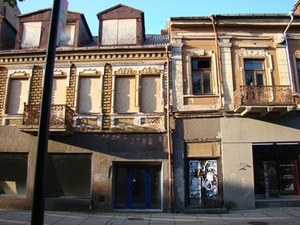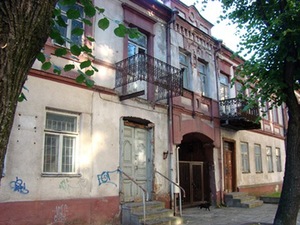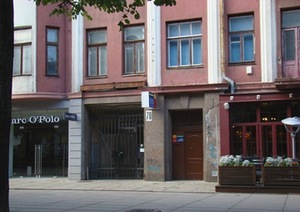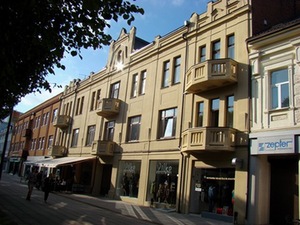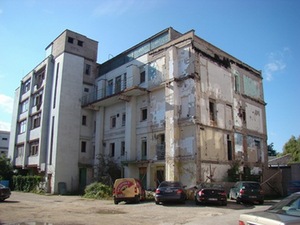WHO WILL SAVE THE ARCHITECTURAL HERITAGE OF KAUNAS? 3
Photographs by Jolita Butkevičienė
In brief: In the last days of August discussions “Face of Kaunas: Fiction and Reality” from the events cycle “What is going on in Kaunas” were held. The problem of involving the town’s architectural heritage into the contemporary life became their leitmotif. It goes without saying that during an hour-long discussion the most difficult topics were touched only fragmentarily and the recipes how to improve the situation remain to be undiscovered so far. One thing is clear: Kaunas people are concerned about how their city looks like. This is evidenced by the young people’s initiated public debate and a fair circle of its participants. Therefore, in order to extend this initiative let us try to find ways to improve the fate of our city's architectural heritage.
In Kaunas there is a special situation which derives from the end of 19th c. and the interwar period in the 20th c. The city has the only first class fortress in Lithuania that consists of nine forts, batteries, military complexes, office buildings and religious objects surrounding the town. Most of these buildings were used for primary purposes by our own or hostile army in the interwar independent Lithuania and the Soviet times. After the Soviet Army withdrawal in 1993, tidy and clean-washed buildings were handed over to the institutions of independent Lithuania. Then it occurred that there was no preparation to use such a wealth of the heritage of defensive architecture.
There are rare examples of good utilization of the objects mentioned above. We can see well-maintained and properly restored buildings that Lithuanian Armed Forces settled in. For instance, a diverse life comes to the boil in the 7th fort: restoration works of buildings and surroundings, cultural-historical activities, genocide research, events of the live history, collection of war heritage exhibits.
Meanwhile, most of Kaunas fortress buildings were given to the State Property Fund and were doomed to be destroyed by vandals. The majority of Šančiai barracks have only outer walls left. It took fifteen years to sell some of these buildings to private owners and to start renovating and applying them to homes. Such behaviour, when buildings of architectural heritage are allowed to be demolished to the remains of facade walls, shows a tenacious facadism in Lithuania. The old buildings become like jackstraws after renovation – the shell is original but the interior is artificial.
A paradoxical but obvious fact must be noted: there are too many objects of defensive architecture in Kaunas because we failed to preserve them. Many citizens believe that Kaunas fortress, representing Russian Tsarist period, is alien to us. That is another flaw of the treatment of Lithuanian cultural heritage: history is sorted to acceptable and unacceptable periods. However, ignorance of history not only impoverishes our memory but also condemns repeating the forgotten mistakes.
Another complicated problem is the ownership of Kaunas buildings. In Soviet times many interwar houses from luxurious cottages to modern apartment buildings were nationalized. After restoring the independence it was decided to return them to the old owners or their descendants. Due to processes of property documentation and provision of new dwellings for residents, those valuable interwar buildings stand abandoned with shabby facades and leaky windows.
Besides, Kaunas is deformed by a large number of derelict industrial zones. The adaptation of such territories is also very significant. Most of industrial objects do not belong to the field of cultural heritage but obviously damage the city’s face. World experience shows that such areas become unconventional, attractive cultural centres, art factories and incubators, lofts, etc. There are many realised projects of such kind in Vilnius and Klaipėda but in Kaunas we face the same problem of ownership.
To conclude, one of the main factors that determine a poor urban architectural image of Kaunas is the lack of legally regulated responsibility of the owners of abandoned properties. All citizens suffer because of their negligence: shabby buildings in the most attractive tourist and cultural areas create a non-aesthetical and unsafe environment, the city image deteriorates and a large tourist potential is lost. This complex problem could be tackled only by an active society with a public spirit that preserves its cultural heritage and helps in solving urban tasks.
